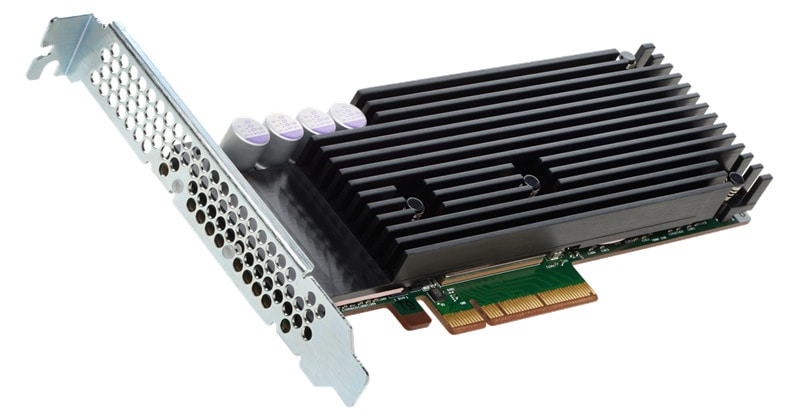HGST today announced preliminary details about the new generation of its FlashMAX application accelerator family: the FlashMAX III, a PCIe 3.0 SSD. The FlashMAX III will be available in various models engineered to address the I/O profiles and bottlenecks of several specific use cases. This announcement also marks the availability of HGST’s new ServerCache software which establishes a hybrid flash environment with resources already available via existing servers and network infrastructure.
 HGST today announced preliminary details about the new generation of its FlashMAX application accelerator family: the FlashMAX III, a PCIe 3.0 SSD. The FlashMAX III will be available in various models engineered to address the I/O profiles and bottlenecks of several specific use cases. This announcement also marks the availability of HGST’s new ServerCache software which establishes a hybrid flash environment with resources already available via existing servers and network infrastructure.
HGST today announced preliminary details about the new generation of its FlashMAX application accelerator family: the FlashMAX III, a PCIe 3.0 SSD. The FlashMAX III will be available in various models engineered to address the I/O profiles and bottlenecks of several specific use cases. This announcement also marks the availability of HGST’s new ServerCache software which establishes a hybrid flash environment with resources already available via existing servers and network infrastructure.
According to HGST, the FlashMAX III has reached 540,000 random read IOPS during 4k benchmarks. The FlashMAX III reached 200,000 mixed sustained random IOPS in manufacturer benchmarks with a workload of 70 percent read operations and 30 percent write operations. The means a 60% increase in random read performance and 30% improvement in random read/write scenarios.
The cards use a universal form factor, HHHL, to make them an easy fit into almost all server platforms; each card had a capacity up to 2.2TB. Like the prior gen FlashMAX II, the cards use MLX NAND and present the storage as a single volume to the host, without need for software RAID.
FlashMAX III Specifications
- Capacity: 1.1TB/1.65TB/2.2TB
- Form Factor: HHHL
- Interface: PCIe Gen3 x8
- MTBF: 2M hours
- Warranty: 5 Years
- Performance Specifications (1.1TB and 2.2TB Models)
- Read Bandwidth: 2.7 GB/s
- Write Bandwidth: 1.4 GB/s
- Random 4K Read IOPS: 541,000
- Random 4K Write IOPS: 77,000
- Random 4K Mixed IOPS (70/30 R/W): 200,000
ServerCache
The new ServerCache 4.0 server software utilizes SSD storage to cache frequently accessed data and is compatible with a variety of block-based storage. ServerCache is designed to integrate with both SAN storage systems as well as direct attached storage with Windows Server and Linux hosts. No VMware support is available at launch, but indications are VMware is on the radar. ServerCache will of course pair well with HGST’s SSD offerings, but the software is drive agnostic, working with flash from any vendor. HGST is also pricing this software, a derivative of the Velobit acquisition, at a third of other popular solutions like Sandisk’s FlashSoft.
Phase Change Memory
This week at Flash Memory Summit, HGST will be showing of a technology demonstration leveraging phase change memory (PCM). The next-gen flash technology will be shown to post at least 3 million IOPS with 512B blocks via PCIe protocol. HGST claims this demonstration is the fastest SSD ever made, driving single digit microsecond read latencies. The drive is a glimpse of what’s to come from HGST, this implementation is appealing as it requires no changes to infrastructure, where many emerging solutions require modifications to the OS or system BIOS.
Pricing and Availability
FlashMAX III samples are currently undergoing OEM qualification processes, with availability expected during Q3 2014. HGST has not made FlashMAX III pricing information available but did announce that the FlashMAX III is expected to be priced at a level that will double the price-to-performance ratio of the FlashMAX II. ServerCache is available now via a 30-day trial and licensing at $995 per physical server.
